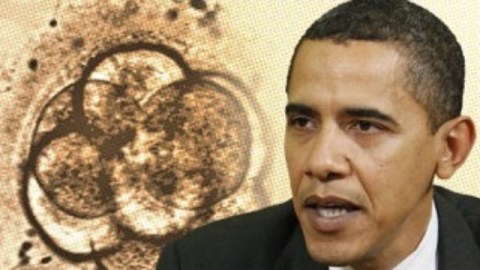Political Communication Researcher Examines Society’s Big Questions

From restarting the economy to dealing with climate change, society’s biggest questions turn on how they are defined by advocates and the news media and acted upon by the public and decision-makers. It is not surprising then that one of the most interesting fields in academe to follow over the past decade has been political communication.
This interdisciplinary field is comprised of communication researchers, political scientists, social psychologists, historians, sociologists, and a diversity of professionals ranging from strategists to journalists. Not only has the field examined the dynamics of election campaigns and traditional policy debates such as abortion, but in recent years interdisciplinary work has also analyzed emerging science-related issues such as climate change, genetic engineering, and nanotechnology.
In past posts, I have interviewed political communication scholars and practitioners in order to gain their insight on emerging trends as well as their outlook on the state of the news industry and the upcoming mid-term elections. Today, in continuing this conversation, I turn to my colleague and collaborator Dietram Scheufele, the John E. Ross Chaired Professor in Communication at the University of Wisconsin and currently a visiting Shorenstein fellow at Harvard University’s Kennedy School of Government.
Widely recognized for his work on framing as well as political participation, Scheufele has more recently focused on examining the emerging number of controversies in American politics involving science and technology.—Matthew Nisbet
How do you define the field of political communication? What do researchers in political communication study?
All communication is inherently political. The conversations we have with family and neighbors about local school board elections are a form of political communication. So is a NYT Op-Ed about health care, and the act of forwarding it to our best friend from college halfway across the country. And the thoughts that go through our mind when we cast our ballot for various candidates on November 2 are also a form of political communication.
In short, the academic field of political communication is really a very broadly defined set of interdisciplinary efforts at the intersection of communication research, political science, psychology, sociology, neuroscience and a host of other disciplines. And in recent years, this list of disciplines has gotten longer and longer.
What are the hot topics and trends in political communication research today?
Most recent trends in political communication research have been dictated by the tectonic shifts in how politics is communicated and the issues that we as a society are facing. What used to be the “mass” in mass communication, for instance, has morphed into different publics that generate, exchange, and use content in ways that were unimaginable just a decade ago. And with global warming, synthetic biology or stem cell research, we have seen issues move to the forefront of political discourse that have the potential to bring long-term and far-reaching changes for almost all aspects of people’s daily lives.
Last year there was a proposal to cut funding for research in political science. It prompted a debate over whether the type of political communication studies dominating the journals had lost sight of the “big questions” facing the contemporary media and political system. What is your view on this debate?
Many of the big questions that we face as a society – energy independence, global warming, or an increasingly polarized electorate – require answers that transcend the boundaries of a single field or discipline. This is particularly challenging for a young field, such as political communication, that continues to struggle with its identity and its desire to compete on an even playing field with much larger disciplines, such as psychology and political science. And if we are not careful, we may follow these disciplines down some dead ends.
A good example is the debate surrounding Republican Senator Tom Coburn’s proposal in October 2009 to prohibit the National Science Foundation from “wasting any federal research funding on political science projects.” Coburn, of course, used the label “political science” but targeted social science much more broadly. And his comments rekindled an old debate among political scientists about incremental disciplinary research versus big questions. Cornell’s Peter Katzenstein summarized this intra-disciplinary dilemma best: “Graduate students discussing their field … often speak in terms of ‘an interesting puzzle,’ a small intellectual conundrum… that tests the ingenuity of the solver, rather than the large, sloppy and unmanageable problems that occur in real life.” Interestingly, President Obama has prioritized the search for answers to many of these supposedly sloppy, unmanageable problems, ranging from mandates for a green economy, to climate change, stem cell research and global warming. All of these issues relate to the increasingly blurring lines between science, politics, society – and of course, political communication. These are the same areas where most societal debates of the next 50 years will take place. And unless we as political communication researchers and educators find a way to make both scholarly and public contributions to these conversations, we will increasingly be marginalized as a discipline.
In recent years, you’ve applied expertise in political communication research to look at questions at the intersection of science and society such as nanotechnology. What are you finding about how the public reaches judgments and forms opinions about controversial areas of science?
Nanotechnology is one of the most interesting emerging technologies we have seen in a while, and one with implications for almost any area of political communication. The U.S. and China are in the middle of a race for global leadership in research productivity and patenting. At the same time, the over 1,000 products that are already on the consumer end market have raised questions about lagging regulatory frameworks and consumer protection. And some of these policy debates are beginning to trickle down to mainstream news outlets, amplified by various interest groups and other players in the policy arena. Our most recent research is tapping some of these dynamics, and particularly the resulting dangers of creating widening gaps between educational elites and less informed citizens with respect to grasping and capitalizing on the benefits of this new technology early on.
Why the shift from examining traditional political questions to focusing on science-related debates? What do you find interesting and useful about this line of research?
Human discovery was always driven by at least two factors: curiosity and finding solutions to specific problems. And modern academe is not any different, except for the fact that we now call it “basic” and “applied” research. The beauty of studying the societal debates surrounding controversial science is that it combines both. An issue like nanotechnology lends itself perfectly to basic social science research since we can explore people’s attitudes without them being a-priori determined by partisan discourse of long-held beliefs. At the same time, our findings also provide concrete solutions to existing communication disconnects about controversial science among scientists, policy makers and various public audiences.
The mid-term Congressional elections are coming up. As a political communication scholar, what do you see as the major issues and trends to watch nationally and in your home state of Wisconsin?
Wisconsin politics has been characterized by an interesting mix of science and politics for a while now. This includes former Republican governor Tommy Thompson who later became George W. Bush’s Health and Human Services Secretary during a time when the administration implemented new Federal funding guidelines for stem cell research in the U.S. And stem cell research has been an issue in a number of subsequent electoral races in Wisconsin.
My guess is that funding for science and technology will again be a key issue in the campaign this year. This includes stem cell research, but also areas in the life sciences and engineering that are critical for the long-term economic health of the state.
What advice do you give students who want to pursue a professional career in political communication? What about students who are thinking of studying political communication at the PhD level?
Get the best training and think about the big, sloppy questions of our time. In other words, my advice doesn’t really differ for students who want to pursue a career in an academic or commercial setting. Both involve walking a very fine line between the intellectual rigor of academe and the everyday relevance of commercial work. Depending on one’s career path, the emphasis may shift slightly one way or another. Nonetheless, in any career the academic and applied side should inform each other, otherwise one’s work ends up being either self-serving or ineffective.
–Interview with Dietram Scheufele, University of Wisconsin
See Also:
Researcher Reflects on Political Communication and Why Frames are More Powerful Than Facts
Former CBS News Political Editor on Politics, TV, and Education in the Glenn Beck Era





